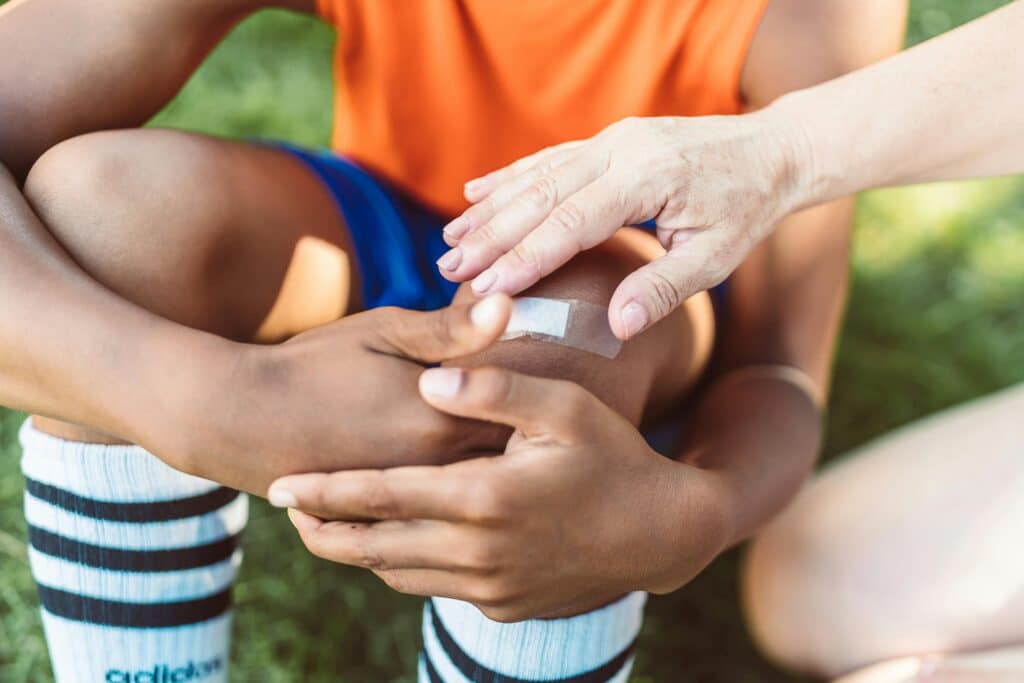
The body heals best when it’s at the normal temperature of 98.6 degrees. Controlled heat can increase blood flow and speed up healing, but summer heat and humidity create the perfect environment for bacterial and fungal growth. Sweating can also cool wound sites and slow down healing.
Challenges of Hot and Humid Weather on Wound Care
Hot, humid summers cause various wound care challenges. As these conditions encourage bacterial and fungal growth, infections are more common during summer. Sweating can dislodge bandages and leave wounds exposed. Sweat can also contaminate wounds with dirt and bacteria, which further increases infection risks.
Essential Hydration for Optimal Wound Healing
Summer brings a risk of dehydration, so focus on keeping your fluids up. Your body needs hydration to deliver fluids and nutrients to the wound site. Epithelial cells, which help create new tissues, also won’t work efficiently if you’re not hydrated.
Proper Wound Cleaning and Dressing in Summer Conditions
Your wounds need a little extra care in summer, so follow these steps to help them stay clean, dressed, and dry:
- Wash your hands with soap and water.
- Gently clean the wound with water and a mild soap.
- To kill germs, use an antiseptic.
- Pat the area dry with a clean cloth.
- Cover the wound with a sterile dressing.
- Change dressings daily, or more often if they become dirty or wet.
- Monitor the wound and seek medical care if you notice redness, discharge, or swelling.
Selecting the Right Dressings for Hot Weather
Here are a few great options for summer dressings:
- Gauze pads or silicone dressings: These let air circulate around the wound.
- Waterproof adhesive bandages: When you sweat or shower, these should stay in place.
- Non-adhesive dressings: If you have sensitive skin, these dressings may work best for you.
- Moisture-wicking dressings: These wick away sweat to keep your wound dry for faster healing.
Sun Protection and UV Safety for Healing Wounds
UV rays can damage wounds and leave scars. You can prevent these problems by applying a sunscreen with an SPF rating of at least 35 whenever you go outside even if you’re not out for long. Make sure you continue this habit for at least a year after your wound heals, no matter the season.
Special Considerations for Diabetic Foot Care in Summer
Increased walking during summer makes diabetics vulnerable to foot ulcers. You can protect yourself by wearing socks and well-fitting shoes that promote circulation. Don’t wear sandals or go barefoot.
Stay Healthy and Heal Faster This Summer
Warm weather makes healing challenging. To avoid any difficulties while you’re healing, practice healthy habits and summer wound care strategies. Contact Atlas Medical Group for help caring for your wounds and a range of other conditions. Our experienced team understands comprehensive wound management and is committed to helping you heal effectively all year round.
